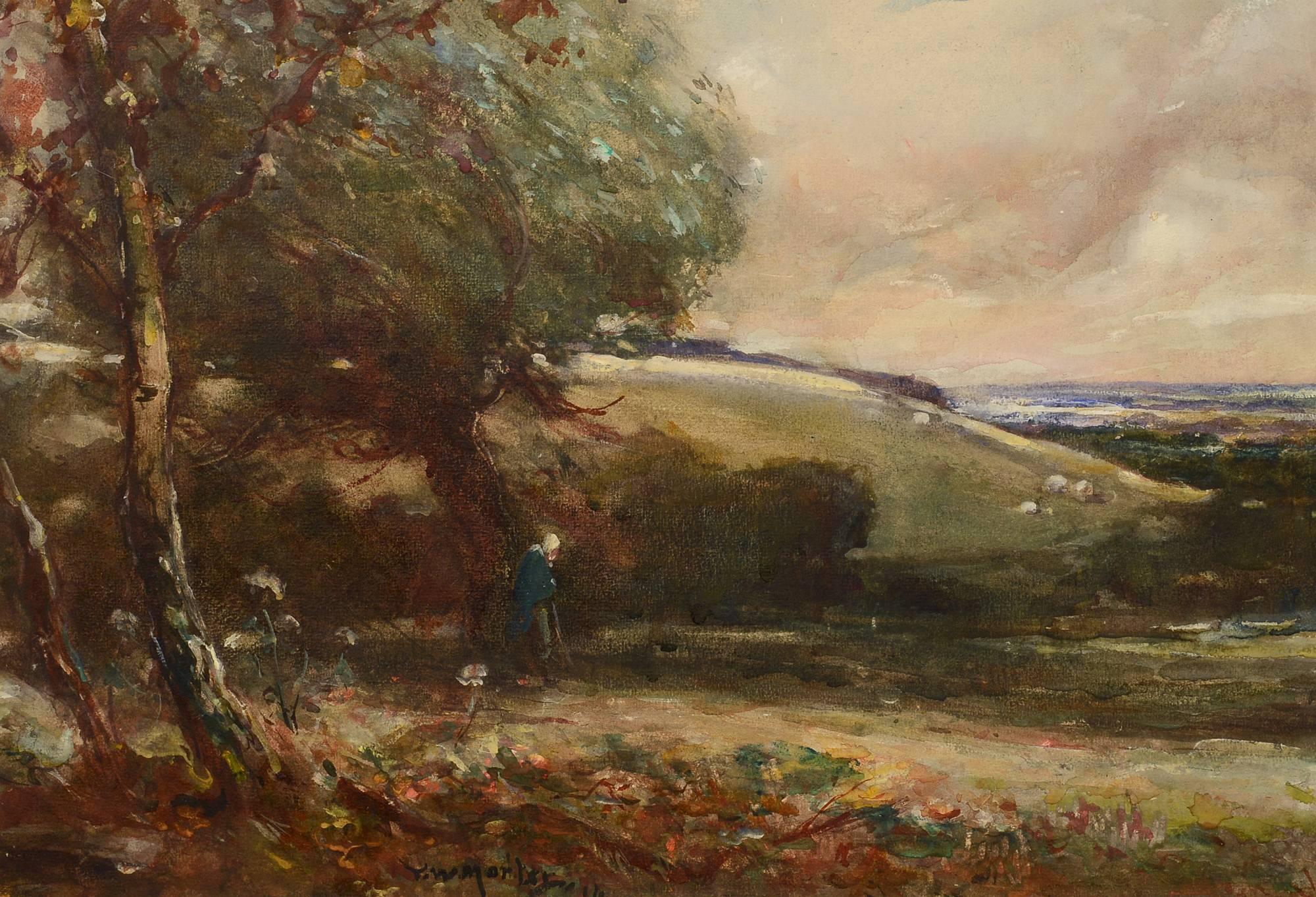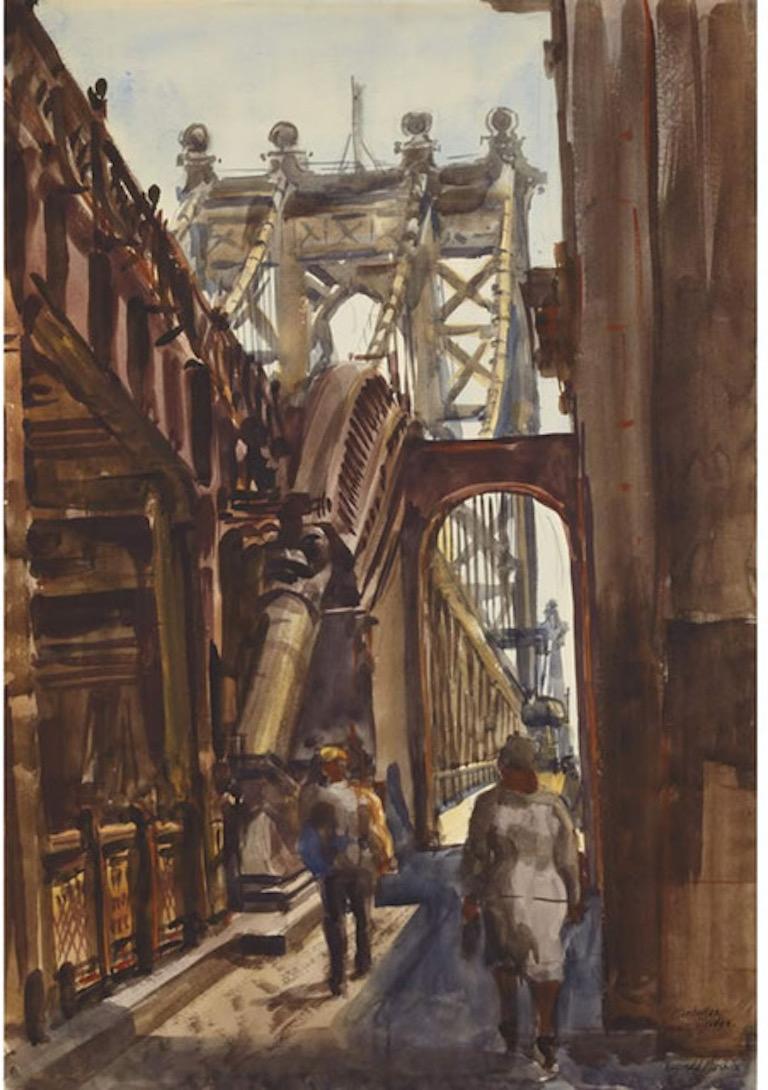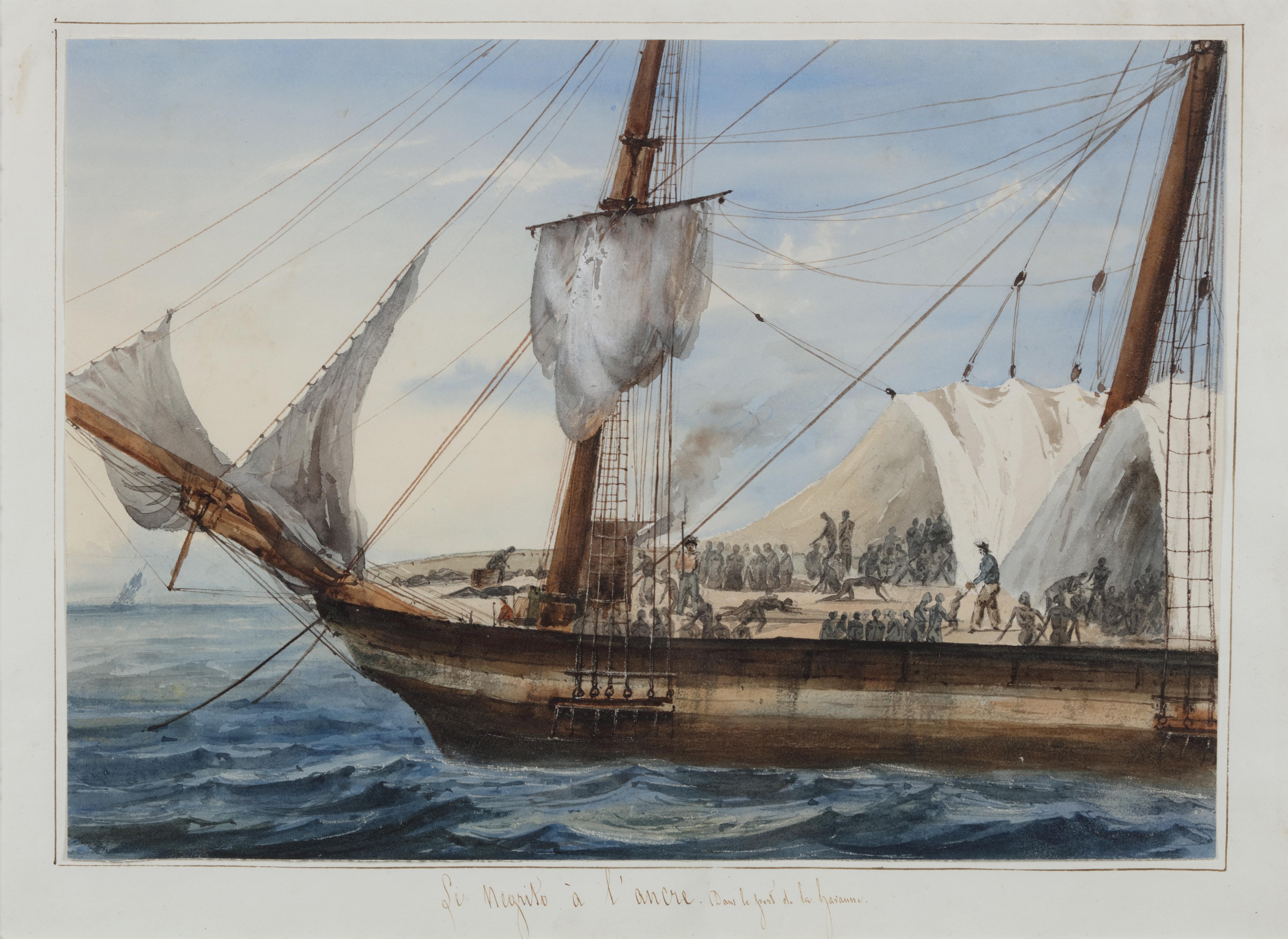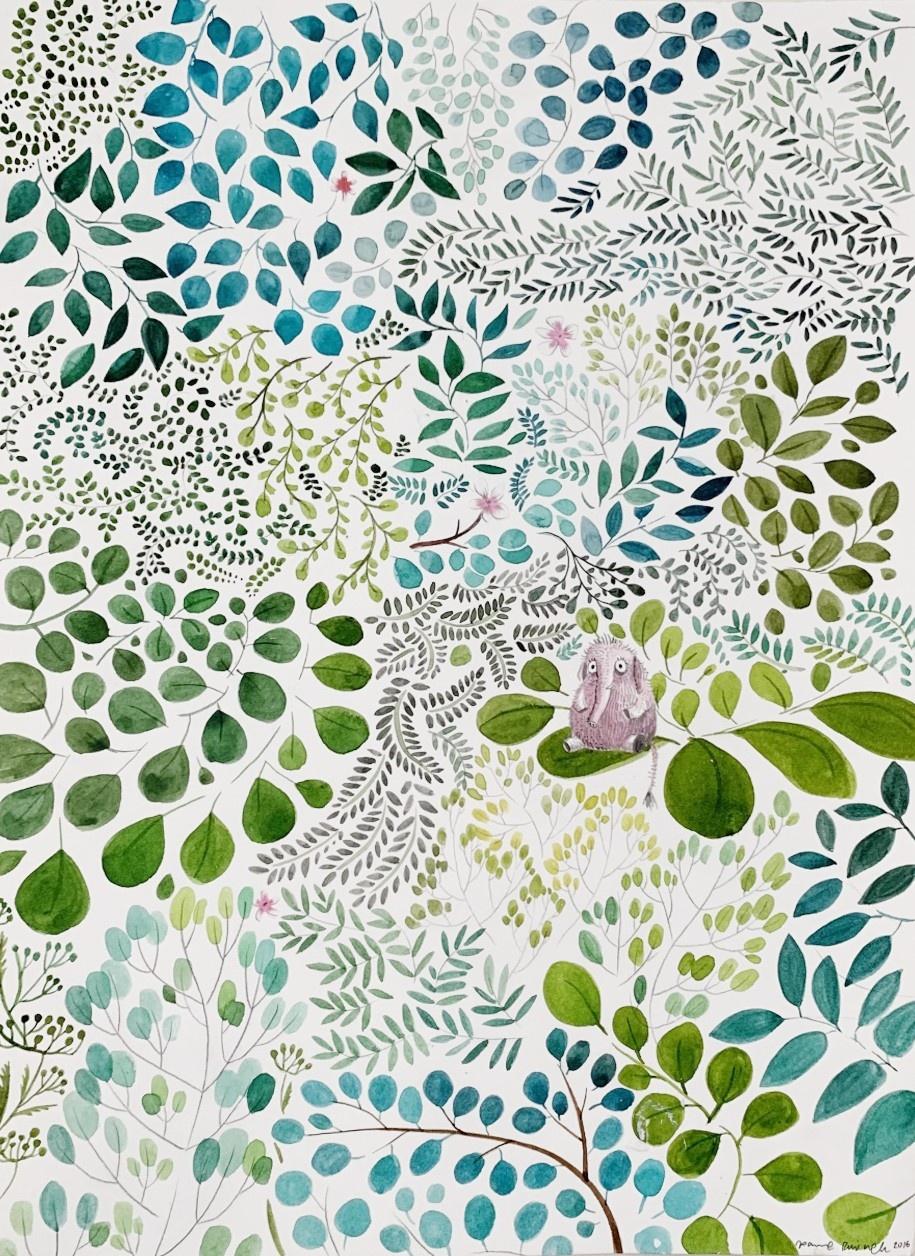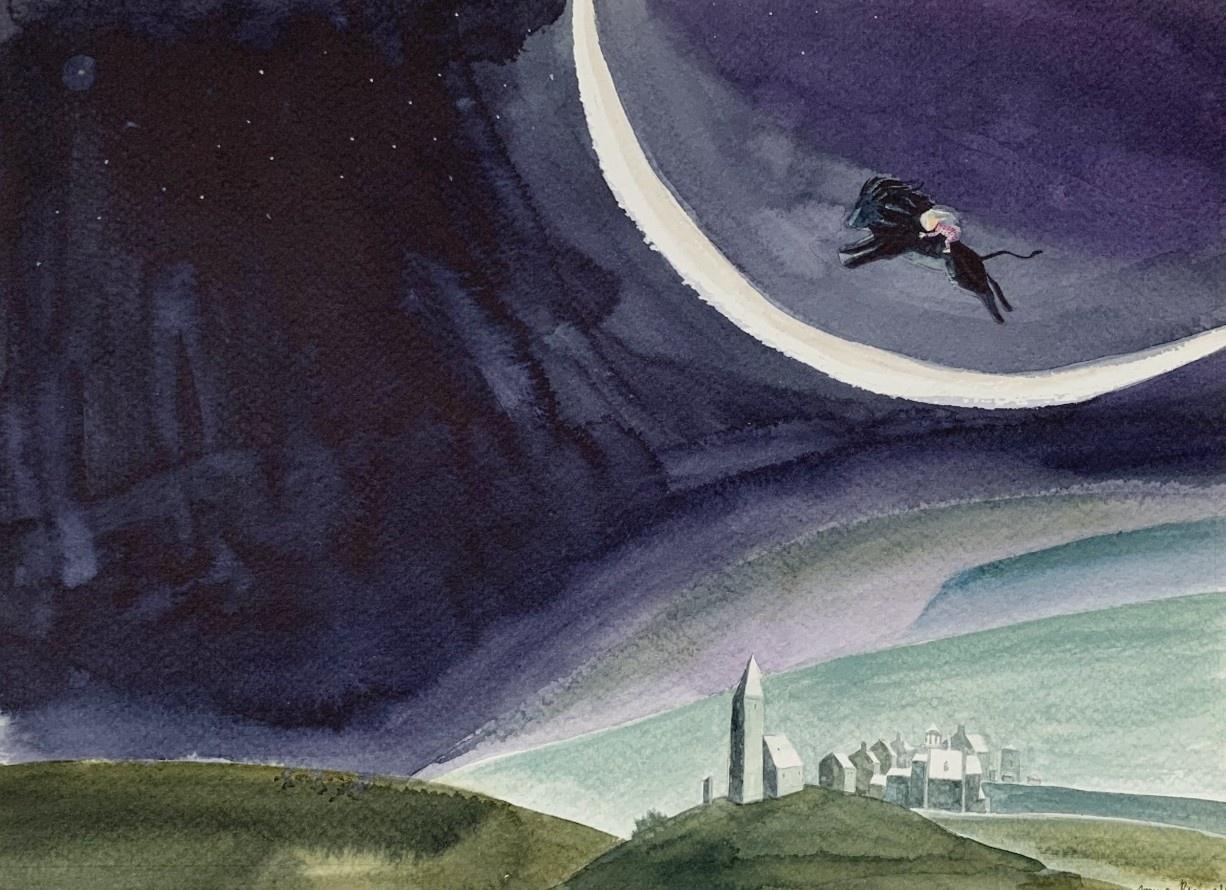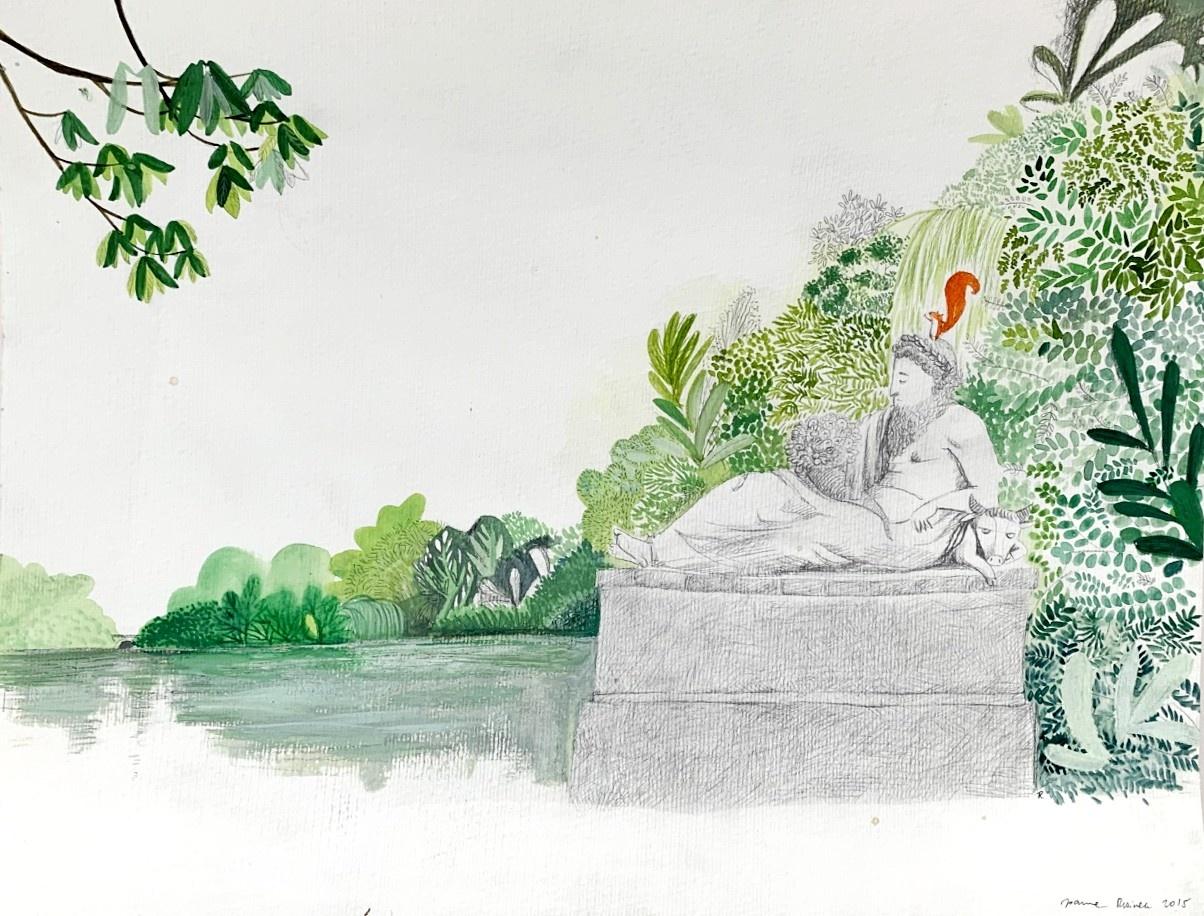Camille PissarroArbres by Camille Pissarro - Pencil on papercirca 1859
circa 1859
About the Item
- Creator:Camille Pissarro (1831-1903, French)
- Creation Year:circa 1859
- Dimensions:Height: 17.33 in (44 cm)Width: 11.03 in (28 cm)
- Medium:
- Movement & Style:
- Period:
- Condition:
- Gallery Location:London, GB
- Reference Number:1stDibs: LU261213325432
Camille Pissarro
Camille Pissarro was one of the most influential members of the French Impressionist movement and the only artist to participate in all eight Impressionist exhibitions.
Born in July of 1830 on the island of Saint Thomas in the Danish West Indies, Camille was the son of Frédéric and Rachel Pissarro. At the age of 12, he went to school in Paris, where he displayed a penchant for drawing. He returned again to Paris in 1855, having convinced his parents to allow him to pursue a career as an artist rather than work in the family import/export business. Camille studied at the Académie Suisse alongside Claude Monet, and, during this time, he met Paul Cézanne, Édouard Manet and Pierre-Auguste Renoir.
In 1869, Camille settled in Louveciennes. The outbreak of the Franco-Prussian War in 1870 prompted him to move to England, and, with Monet, Camille painted a series of landscapes around Norwood and Crystal Palace, while studying English landscape painting in the museums. Upon returning a year later at the end of the War to Louveciennes, Camille discovered that only 40 of his 1,500 paintings — almost 20 years’ work — remained undamaged.
Camille settled in Pontoise in the summer of 1871, remaining there and gathering a close circle of friends around him for the next 10 years. He reestablished relationships with Cézanne, Manet, Monet, Renoir and Edgar Degas, expressing his desire to create an alternative to the Salon, so that their group could display their own unique styles. Camille married Julie Vellay, with whom he would have seven children. Cézanne repeatedly came to stay with them, and, under Camille’s influence, he learned to study nature more patiently, even copying one of Camille’s landscapes in order to learn his teacher’s technique.
The first Impressionist group exhibition, initiated by Monet in 1874, earned the Impressionists much criticism for their art. While mainly interested in landscape, Camille introduced people — generally, peasants going about their rural occupations — and animals into his works, and they often became the focal point of the composition. It was this unsentimental and realistic approach, with the complete absence of any pretense, which seemed to stop his work from finding appreciation in the general public.
One of the few collectors who did show interest in Camille’s work was a bank employee named Paul Gauguin, who, after acquiring a small collection of Impressionist works, turned to Camille for advice on becoming a painter himself. For several years, Gauguin closely followed his mentor, and, although their friendship was fraught with disagreement and misunderstandings, Gauguin still wrote shortly before Camille’s death in 1906: “He was one of my masters, and I do not deny him.”
In the 1880s, Camille moved from Pontoise to nearby Osny, before Eragny, a small village much further from Paris. At a time when he was dissatisfied with his work, in 1885, Camille met both Paul Signac and Georges Seurat. He was fascinated by their efforts to replace the intuitive perceptive approach of the Impressionists with a “Divisionist” method, or scientific study of nature’s phenomena based on optical laws. Despite having reached his mid-50s, Camille did not hesitate to follow the two young innovators. The following year, he passed on this new concept to Vincent Van Gogh, who had just arrived in Paris and was keen to learn of the most recent developments in art. However, after a few years, Camille felt restricted by Seurat’s theories and returned to his more spontaneous technique while retaining the lightness and purity of color acquired during his Divisionist phase.
In the last years of his life, Camille divided his time between Paris, Rouen, Le Havre and Eragny, painting several series of different aspects of these cities, with varying light and weather effects. Many of these paintings are considered among his best and make for an apt finale to his long and prodigious career.
When Camille Pissarro died in the autumn of 1903, he had finally started to gain public recognition. Today his work can be found in many of the most important museums and collections throughout the world.
Find original Camille Pissarro art on 1stDibs.
(Biography provided by Stern Pissarro Gallery)
- ShippingRetrieving quote...Ships From: London, United Kingdom
- Return PolicyA return for this item may be initiated within 7 days of delivery.
- Inconscience by Yvon Pissarro - Contemporary work on paperBy Yvon PissarroLocated in London, GB*UK BUYERS WILL PAY AN ADDITIONAL 20% VAT ON TOP OF THE ABOVE PRICE Inconscience by Yvon Pissarro (b. 1937) Conté chalk and pastel pencil on paper 50 x 65 cm (19 ³/₄ x 25 ⁵/₈ inches...Category
21st Century and Contemporary Figurative Drawings and Watercolors
MaterialsPaper, Chalk, Conté, Pastel, Pencil
- Evasion by Yvon Pissarro - Contemporary work on paperBy Yvon PissarroLocated in London, GB*UK BUYERS WILL PAY AN ADDITIONAL 20% VAT ON TOP OF THE ABOVE PRICE Evasion by Yvon Pissarro (b. 1937) Conté chalk, crayon, pastel pencil on paper 65 x 50 cm (25 ⁵/₈ x 19 ³/₄ inches...Category
21st Century and Contemporary Figurative Drawings and Watercolors
MaterialsPaper, Chalk, Conté, Crayon, Pastel, Pencil
- La Maison Rose, Les Andelys by Ludovic-Rodo Pissarro - Landscape, watercolourBy Ludovic-Rodo PissarroLocated in London, GB*UK BUYERS WILL PAY AN ADDITIONAL 20% VAT ON TOP OF THE ABOVE PRICE La Maison Rose, Les Andelys by Ludovic-Rodo Pissarro (1878-1952) Watercolour, ink and ...Category
1930s Post-Impressionist Figurative Drawings and Watercolors
MaterialsInk, Paper, Watercolor, Pencil
- Paysage de l'Aven by Ludovic-Rodo Pissarro - Watercolour, Coastal sceneBy Ludovic-Rodo PissarroLocated in London, GB*UK BUYERS WILL PAY AN ADDITIONAL 20% VAT ON TOP OF THE ABOVE PRICE Paysage de l'Aven by Ludovic-Rodo Pissarro (1878-1952) Watercolour and pencil on paper 27 x 38 cm (10 ⅝ x 15 inc...Category
Early 1900s Post-Impressionist Landscape Drawings and Watercolors
MaterialsPaper, Watercolor, Pencil
- Moulin Vardon près Gournay, Graphite on Paper by Paulémile Pissarro, circa 1934Located in London, GBSOLD UNFRAMED *UK BUYERS WILL PAY AN ADDITIONAL 20% VAT ON TOP OF THE ABOVE PRICE Moulin Vardon près Gournay, Graphite on Paper by Paulémile Pissarro, 1934 Graphite on paper 32 x ...Category
1930s Post-Impressionist Landscape Drawings and Watercolors
MaterialsPaper, Graphite
- Draveil by LUDOVIC-RODO PISSARRO (1878-1952) - Watercolour on paperBy Ludovic-Rodo PissarroLocated in London, GB*UK BUYERS WILL PAY AN ADDITIONAL 20% VAT ON TOP OF THE ABOVE PRICE Draveil by LUDOVIC-RODO PISSARRO (1878-1952) Watercolour on paper 24 x 32 cm (9 1⁄2 x 12 5⁄8 inches) Titled and ...Category
Early 20th Century Post-Impressionist Landscape Drawings and Watercolors
MaterialsWatercolor, Pencil, Paper
- Figure by the SeaBy Thomas William MorleyLocated in Wiscasset, MEA listed 19th century British artist and Barbizon School painter, Thomas W. Morley's Figure by the Sea captures the color, technique, softness of form and tonal qualities indicative ...Category
Late 19th Century Barbizon School Landscape Drawings and Watercolors
MaterialsWatercolor
- "Manhattan Bridge" NYC American Scene Modernism Watercolor WPA Urban RealismBy Reginald MarshLocated in New York, NYReginald Marsh "Manhattan Bridge" NYC American Scene Modernism Watercolor WPA Urban Realism, 20 x 14 inches. Watercolor and pencil on paper, 1938. Signed...Category
1930s American Modern Landscape Drawings and Watercolors
MaterialsPaper, Watercolor, Pencil
- Portrait of a Slave Ship: 'Le Negrito à l’ancre. Dans le port de la havanne'Located in Amsterdam, NLFRANÇOIS MATHURIN ADALBERT, BARON DE COURCY (1805-1839) 'Le Negrito à l’ancre. Dans le port de la havanne' Indistinctly signed lower left Titled on the mount Pencil and watercolour, heightened with white, on paper, 24.8 x 34.6 cm Literature: The present watercolour will be illustrated in: - Prof. Manuel Garcia’s projected book on the disease and the slave trade provisionally titled “Fighting the Yellow Demon of Fever: The Struggle against Disease in the Illegal Slave Trade”. - Prof. Micael Zeuske’s forthcoming Global history of slave trade. Exhibited: Mexico City, 1998, Palacio Virreinal, El Barón de Courcy, illustrationes de un viaje, 1831-1833, no. 108 Note: Baron de Courcy was in the Caribbean in late 1832 and early 1833, following his tour of Mexico in 1832, on the last leg of his “Grand Voyage...Category
Mid-19th Century Old Masters Figurative Drawings and Watercolors
MaterialsWatercolor, Paper, Gouache, Pencil
- Who needs a mammoth - Book illustration, Polish artist, Watercolor paintingBy Joanna RusinekLocated in Warsaw, PLIllustration for book by Agnieszka Frączek 'Who needs a mammoth' JOANNA RUSINEK Printmaker, illustrator of children's books, author of press ill...Category
2010s Contemporary Figurative Drawings and Watercolors
MaterialsPaper, Watercolor, Pencil
- Stenka's songs - Book illustration, Polish artist, Watercolor paintingBy Joanna RusinekLocated in Warsaw, PLIllustration for book by Barbara Stenka 'Stenka's songs' JOANNA RUSINEK Printmaker, illustrator of children's books, author of press illustratio...Category
2010s Contemporary Figurative Drawings and Watercolors
MaterialsPaper, Watercolor, Pencil
- Belvedere for children - Book illustration, Polish artist, Watercolor paintingBy Joanna RusinekLocated in Warsaw, PLIllustration for book by Michał Rusinek 'Belvedere for children' JOANNA RUSINEK Printmaker, illustrator of children's books, author of press ill...Category
2010s Contemporary Figurative Drawings and Watercolors
MaterialsPaper, Watercolor, Pencil
